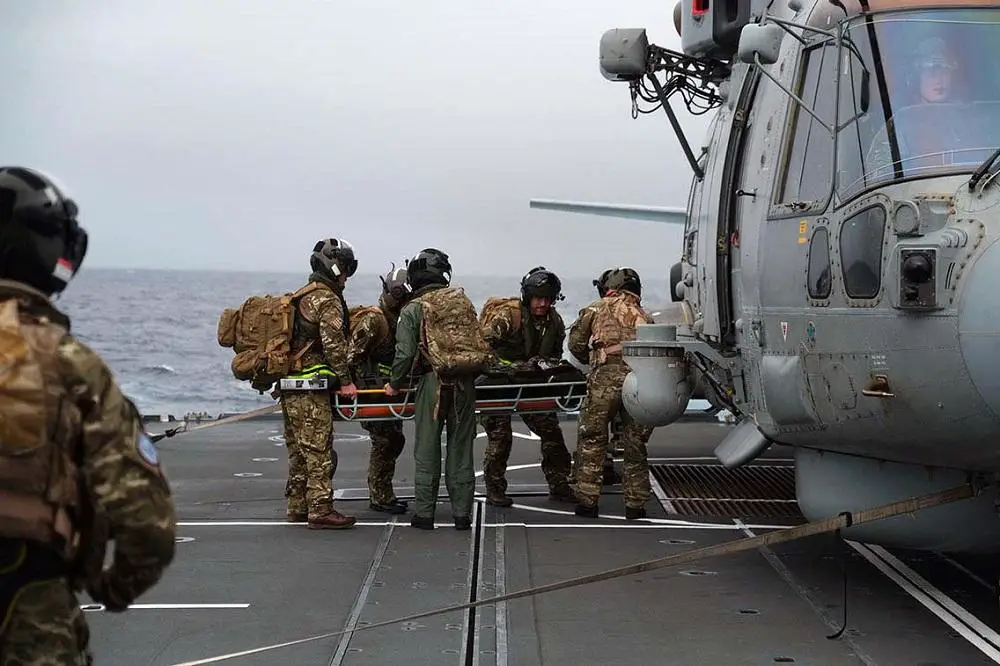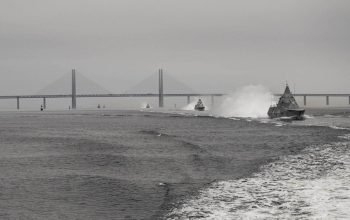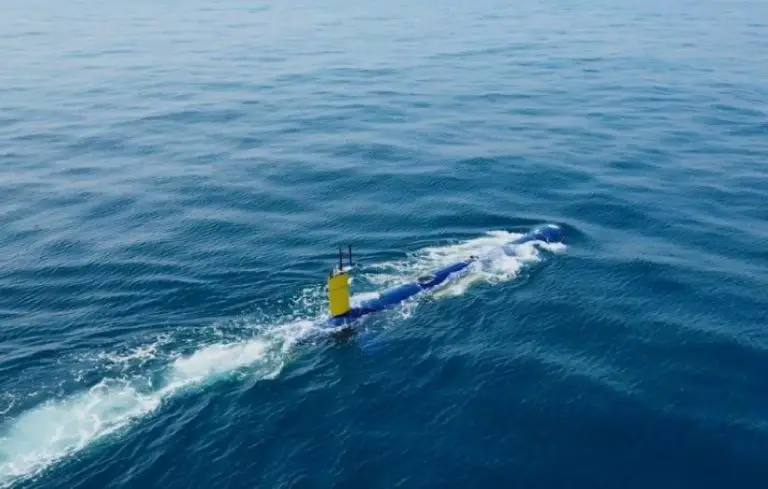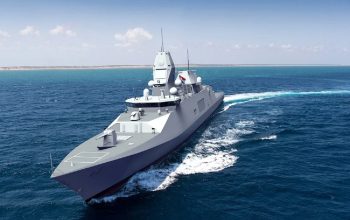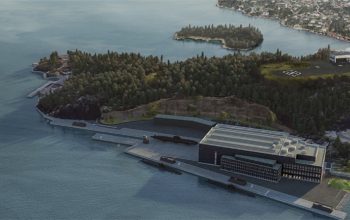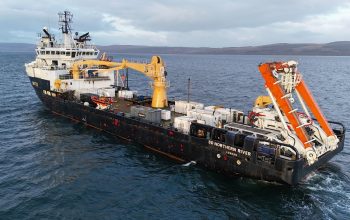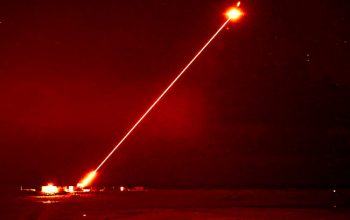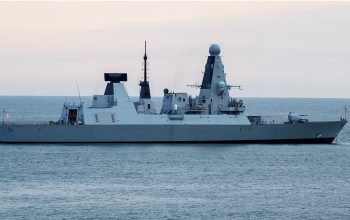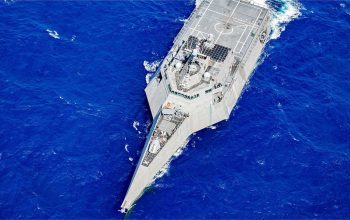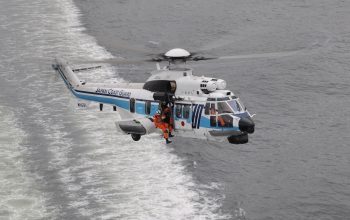Medics on Britain’s flagship tested a ‘military air ambulance’ at sea for the first time to speed up life-saving the next time a Royal Navy carrier group goes into action. HMS Queen Elizabeth used her autumn deployment to the North Sea and Scandinavia – the northern ‘arm’ of the Royal Navy’s Operation Achillean, which has also seen an amphibious task group spearheaded by HMS Albion exercising in the Mediterranean – to test the ‘air ambulance’ concept, mirroring the emergency service provided by the NHS but at sea. The new Maritime Medical Emergency Response Team or MMERT flies a small team of casualty experts directly to the injured person by helicopter, provides on-the-spot life-saving care, then deliver them to a hospital for further treatment… be that ashore or the sick bay on an aircraft carrier.
MMERT was tested in an exercise with Queen Elizabeth’s escort HMS Richmond: a ‘casualty’ in the engine room suffered injuries more severe than those the frigate’s sick bay team could cope with, requiring the A&E expertise of the MMERT team, and ultimate transfer to the flagship. Besides the new ‘air ambulance’ the carrier’s full medical team was activated for the first time in nearly 12 months to bring the ship’s hospital facilities to life: two emergency medicine beds, operating theatre, two intensive care beds, supported not just by highly-skilled staff, but also a deployable module containing more than 8,500 medical items worth more than £1m. It’s only fully staffed by 22 personnel – doctors, surgeons, anaesthetists, nurses etc – when there’s a carrier group formed (there were up to ten warships, submarines and auxiliaries, crewed by around 3,000 men and women on the carrier’s 2021 deployment).
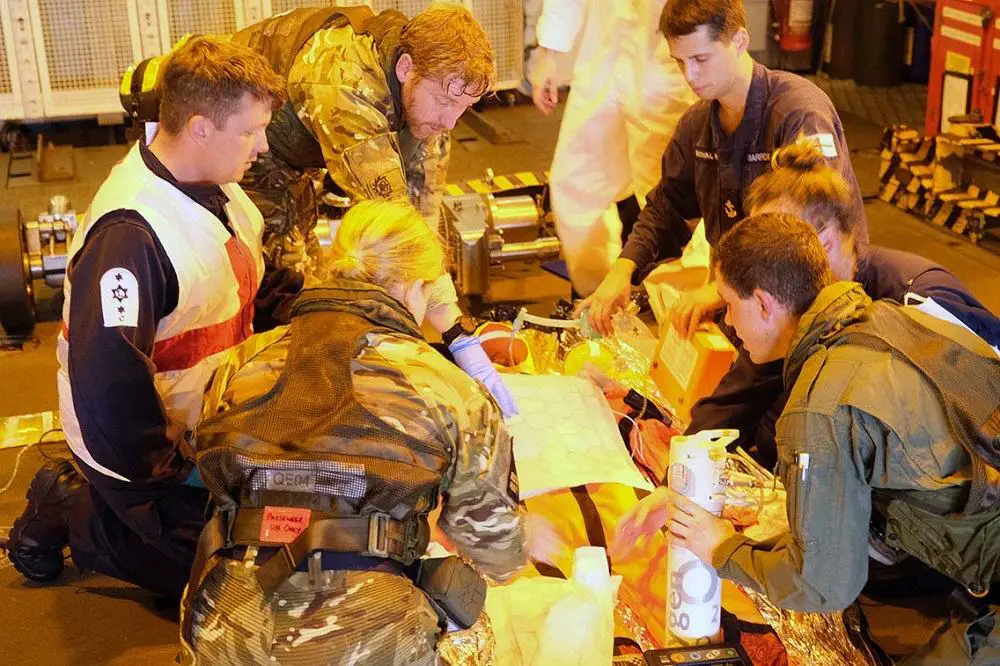
“The exercise provided an excellent opportunity to test the developing Maritime Medical Emergency Response Team capability. The team was composed of a Royal Navy medical consultant, paramedic and a medical assistant. Maritime MERT provides advanced trauma care far forward ¬– equivalent to the care provided by UK air ambulances – including senior clinical decision making, anaesthesia and blood products,” explained paramedic Warrant Officer 1 Phil Towers.
Commander Chris L’amie, Richmond’s Commanding Officer said, “The realism imparted on this exercise because of the professionalism of the MERT, and the support provided to it from my team, wasremarkable – so much so, that when I witnessed the treatment room and the staged handling of an amputee, the atmosphere was justly tense, as you would imagine from something akin to a field hospital.”
Given the nature of maritime operations and to fully appreciate the environmental and geographical constraints associated with operating in a ship as part of a wider task group, it is important to undertake this validation process at sea. The medics are a mix of reservists and full-time Royal Navy personnel who work in NHS hospitals and units when in the UK to maintain their medical skills. Fully operational, the carrier sickbays offer what’s known as ‘Role 2’ care: the ability to perform life/limb-saving surgery and advanced resuscitation of casualties (Role 1 care is delivered by medics in the field who provide immediate first aid/life-saving measures). Among those being assessed is Medical Assistant Amy Walker. HMS Queen Elizabeth returned to Portsmouth yesterday evening to undergo some maintenance ahead of Christmas leave for the ship’s company and renewed operations in the new year.
